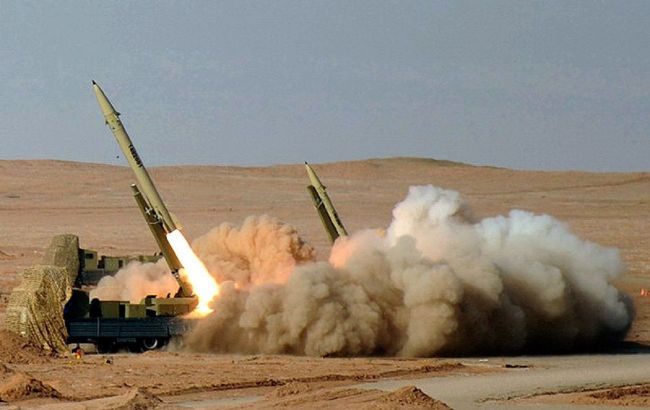Expert explains how Iranian ballistic missiles differ from Russian ones
 Photo: Launch of Iranian Fateh-110 missiles (ypa.ir)
Photo: Launch of Iranian Fateh-110 missiles (ypa.ir)
The Iranian ballistic missiles, according to the declared characteristics, are more destructive, but cannot maneuver in the air, unlike the Russian Iskanders. Only Patriot and SAMP-T complexes can intercept such targets, as aviation and missile weapons expert Valerii Romanenko says in a comment to RBC-Ukraine, according to the article "Ababil and Fateh-110: Potential transfer of Iranian ballistic missiles to Russia, implications for Ukraine's security."
The expert explains some features of Iranian ballistic missiles amid concerns expressed by Western partners about Tehran's possible readiness to transfer Ababil and Fateh-110 missiles to Moscow.
Iranian ballistics
Based on the launch range of Ababil at 86 kilometers, basically, the same Ukrainian frontline cities that are currently under attack will be under threat.
At the same time, the expert is not sure that the warhead of such a missile, as stated by the developers, can have a mass of 45 kg, because sometimes the casing is made thick to increase the radius of damage through fragments.
"Ababil is more of a tactical missile that, in terms of parameters, roughly corresponds to systems like Tochka-U, Smerch, or Uragan. It is no need to say that they pose a new danger to us," Romanenko notes.
As for the Iranian Fateh-110 ballistic missile, used in combat operations in Syria, the range of the most massive (third generation) missile is low - up to 300 km.
"Thus, even with a strong desire, it will not reach Kyiv. But it has a much larger warhead, reaching 650 kg," explained the expert.
Romanenko points out that in terms of its characteristics, Fateh-110 has significantly greater destructive power than Russian Tochka-U, S-300, and Iskander.
The expert also notes that Iranians still have Zolfaghar ballistic missiles with a range of up to 700 km, but their warhead mass, according to various data, is reduced to 500 or even 300 kg.
The main differences from Russian ones
Iranian missiles differ greatly from what the Russian military-industrial complex produces: different sizes, engines, and, on average, a smaller warhead.
This missile armament is guided by GPS and GLONASS satellite systems, and they are susceptible to electronic warfare means and, in general, much simpler than Iskanders.
Romanenko also points out that Russian Iskander missiles can deploy traps and maneuver in the terminal flight stage, which complicates their elimination in the air.
"Iranian missiles cannot maneuver. But they are ballistic, so only Patriot and SAMP-T anti-missile complexes can effectively intercept them," the expert emphasized.
What about real indicators?
He also added that the characteristics of Iranian missiles, like other weapons, may raise doubts because "weapon manufacturers often sin by using data obtained in ideal conditions in the advertising of their products."
"Therefore, the characteristics of missiles should be compared with the conclusions of Western experts and what they are based on - real indicators recorded by satellites or on promotion," the expert added.
Earlier, the representative of the Defense Intelligence of the Ministry of Defense of Ukraine, Andrii Chernyak, stated that Russia was making efforts to supply ballistic missiles from Iran, yet not successful.
Our previous story "Would Russia convince Iran to transfer ballistic missiles, and could Ukrainian air defense intercept them" presented experts' opinions on whether Tehran would dare to supply ballistic missiles to Russia.

